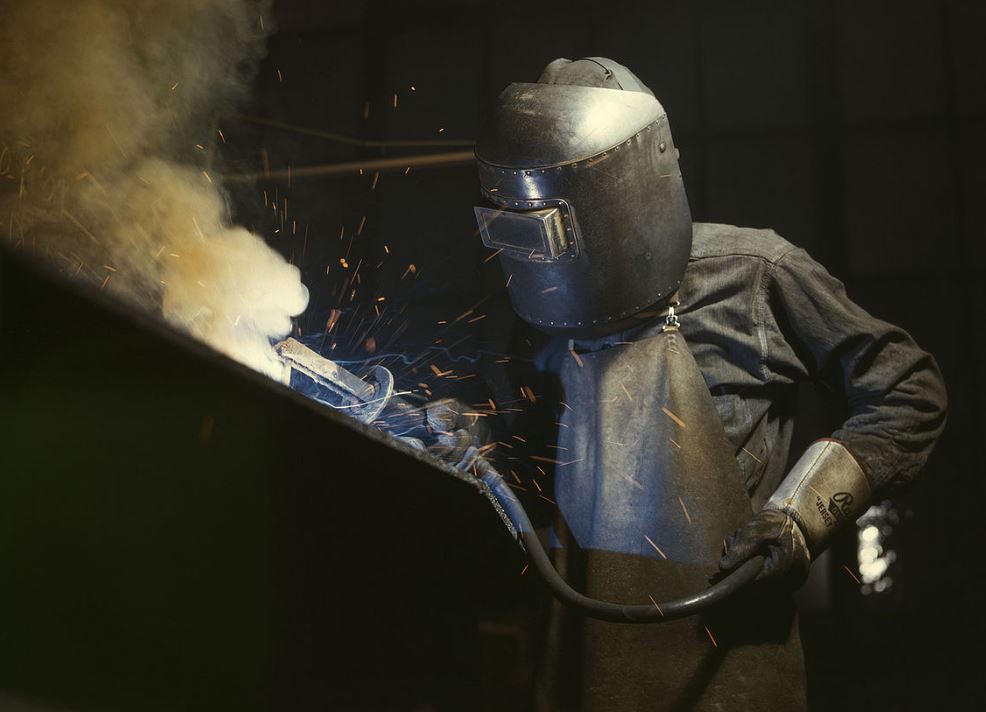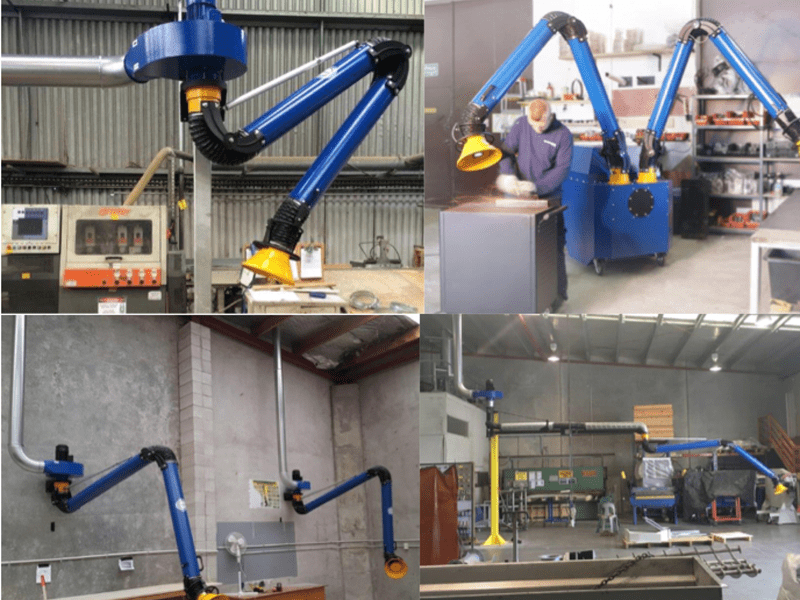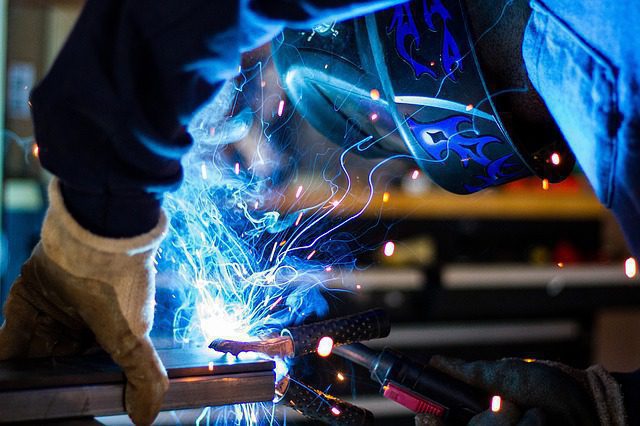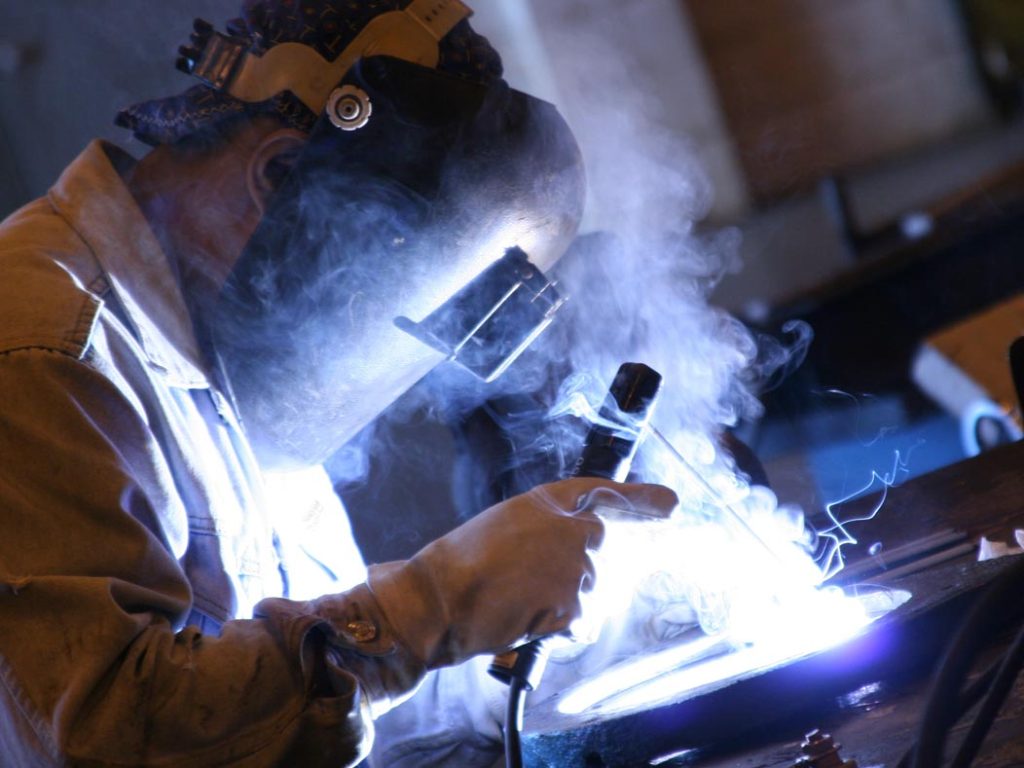If you’ve ever found yourself struggling with the lingering presence of welding fumes in your workspace, you’re not alone.
Whether you’re a professional welder or an avid hobbyist, the fumes produced during welding can cause concern.
Not only can they be unpleasant to breathe in, but they can also pose serious health risks if not properly managed.
In this article, we’ll explore some effective methods to help you eliminate welding fumes from your workspace so you can breathe easily and work in a healthier environment.
1. Understanding the Hazards of Welding Fumes
1.1 Health Risks Associated with Welding Fumes
Welding fumes can pose significant health risks if proper precautions are not taken. These fumes contain harmful substances like metal oxides, ozone, and gases like carbon monoxide and nitrogen dioxide.
Prolonged exposure to these fumes can lead to various health issues, including respiratory problems, lung damage, and cancer. It is essential to be aware of these potential hazards and take appropriate measures to protect yourself and others in your workspace.
1.2 Types of Welding Fumes
Different welding processes produce different fumes depending on the materials being welded. For example, welding stainless steel can produce chromium and nickel fumes, while welding aluminum can generate aluminum oxide fumes.
Understanding the types of fumes associated with the welding processes used in your workspace is crucial to ensuring proper control measures are in place.
1.3 Regulations and Standards for Welding Fumes
Various regulations and standards have been established to protect workers from the hazards of welding fumes.
These guidelines outline the permissible exposure limits (PELs) for different substances in welding fumes and specify the safety measures employers must implement. Familiarize yourself with the applicable regulations in your region to ensure compliance and create a safe working environment for everyone.
2. Assessing the Ventilation Needs
2.1 Determining the Air Exchange Rate
Proper ventilation is crucial in minimizing the accumulation of welding fumes in your workspace. Calculate the air exchange rate required to maintain a safe and healthy environment to determine the ventilation needs.
Factors such as the size of the workspace, the number of welding stations, and the type of welding processes being performed should be considered in this assessment.
2.2 Identifying the Location and Type of Ventilation System
Once you have determined the air exchange rate, the next step is to identify the appropriate location for the ventilation system. The system should be strategically placed to effectively capture and remove the welding fumes.
Different ventilation systems, such as local exhaust ventilation (LEV) and general ventilation systems, are available. Consider the specific requirements of your workspace and consult with a professional HVAC engineer to select the most suitable option.
2.3 Consulting a Professional HVAC Engineer
Designing and implementing an effective ventilation system can be challenging, especially if you are unfamiliar with HVAC principles and regulations. It is highly recommended to consult a professional HVAC engineer specializing in industrial ventilation.
They can assess your workspace, help determine the ventilation needs, and provide expert guidance on selecting and installing the appropriate ventilation system. Their expertise will ensure the system complies with regulations and effectively mitigates welding fume hazards.
3. Implementing Local Exhaust Ventilation (LEV)
3.1 Understanding the Benefits of LEV
Local exhaust ventilation (LEV) is a highly effective method for controlling welding fumes at the source. This system consists of hoods or extraction arms placed near the welding arc to capture and remove the fumes before they disperse into the workspace.
LEV offers several advantages, including improved air quality, reduced exposure to harmful fumes, and a more comfortable working environment. Implementing LEV can significantly create a safer workspace for you and your colleagues.
3.2 Designing an Effective LEV System
Designing an effective LEV system requires careful consideration of various factors. The hoods or extraction arms should be placed near the welding operation to capture the fumes efficiently. The airflow velocity at the capture point should be sufficient to overcome the natural dispersion of the fumes.
Additionally, the ductwork and fans must be sized appropriately to ensure adequate airflow and prevent the accumulation of fumes in the system. Working with a professional HVAC engineer experienced in LEV design ensures an optimally functioning system.
3.3 Choosing the Right LEV Equipment
Choosing the right LEV equipment is vital for the success of your ventilation system. Different hoods and extraction arms are available, each designed for specific welding processes and applications.
Factors such as the size of the workspace, the type of welding being performed, and the position of the welding stations should be considered when selecting LEV equipment. Consulting with experts in the field will help you make informed decisions and ensure that the chosen Equipment meets regulatory requirements and effectively controls welding fumes.
4. Proper Use of Personal Protective Equipment (PPE)
4.1 Types of PPE for Welding Fumes
In addition to implementing engineering controls like ventilation systems, personal protective Equipment (PPE) is essential for further reducing the risk of exposure to welding fumes.
PPE options for welding fumes include respiratory protection, such as respirators or powered air-purifying respirators (PAPRs), as well as protective clothing, eye protection, and hearing protection. Selecting the appropriate PPE depends on the specific hazards present and should be based on a thorough assessment of workplace conditions and requirements.
4.2 Ensuring Proper Fit and Maintenance of PPE
To ensure maximum protection, it is crucial that PPE fits properly and is maintained regularly. Ill-fitting respirators or other protective Equipment can result in leaks and compromise safety.
Operators should undergo fit testing to verify that their respirators create a proper seal. Regular inspection and maintenance of PPE are necessary to address any damage or wear that may reduce its effectiveness. Proper training on PPE fit and maintenance will help minimize exposure to welding fumes and protect workers’ health.
4.3 Training on PPE Usage and Limitations
Proper training on the correct usage and limitations of PPE is vital to ensure that workers understand how to protect themselves against welding fumes effectively. Workers should be educated on correctly donning, doffing, and adjusting their PPE to maintain a secure fit.
They should also be aware of the limitations of PPE, such as the need for regular replacement of filters or cartridges in respirators. Ongoing training and clear communication are essential for promoting a safety culture and ensuring the effective use of PPE.
5. Minimizing Fume Generation and Exposure
5.1 Selecting Low-Fume or Fumeless Welding Processes
One of the most effective ways to minimize fume generation is by choosing low-fume or fumeless welding processes when feasible. Some advanced welding processes produce significantly fewer fumes compared to conventional ones.
For example, pulsed gas metal arc welding (GMAW) or laser welding emit fewer fumes and may be suitable alternatives in specific applications. By selecting appropriate welding processes, you can reduce the amount of fumes generated and, consequently, the exposure risk in your workplace.
5.2 Using Welding Parameters and Techniques to Reduce Fume Generation
Some techniques and parameters can be adjusted to minimize fume generation even when using conventional welding processes. Optimizing parameters such as voltage, current, and wire feed speed can help reduce the fume emission rate.
Techniques like proper gas shielding, shorter arc lengths, and avoiding unnecessary weld passes can also minimize fume generation. Training welders on these techniques and regularly monitoring their practices will ensure minimal fume generation.
5.3 Positioning Workpieces and Creating Barriers
Strategically positioning workpieces and creating barriers can help contain fumes and prevent their dispersion into the workspace. Placing workpieces in a way that allows the fumes to be captured more effectively by the ventilation system or localized exhaust can significantly reduce fume exposure.
Erecting physical barriers, such as screens or curtains, can also help prevent fumes from spreading to other areas. These simple yet effective measures add a layer of protection against welding fumes.
6. Proper Handling and Storage of Hazardous Materials
6.1 Storing and Labeling Welding Consumables and Chemicals
Proper storage and labeling of welding consumables and chemicals are essential to prevent accidents and minimize exposure to hazardous substances. Welding consumables, such as electrodes or filler wires, should be stored in designated areas, preferably in a well-ventilated location, away from flammable or combustible materials.
Additionally, chemicals used in the welding process, such as cleaning agents or anti-spatter sprays, should be appropriately labeled and stored according to their specific requirements, such as temperature or light sensitivity.
6.2 Ensuring Proper Disposal of Hazardous Waste
Local regulations and best practices should manage the disposal of hazardous waste generated during welding activities. Hazardous waste, such as used welding electrodes or contaminated filters, must be collected and stored in designated containers.
A licensed waste management service provider should label these containers appropriately and regularly emptied. Implementing a waste management system with proper segregation, storage, and disposal procedures is crucial to minimize environmental impact and safeguard occupational health.
6.3 Managing Spills and Leakages
Accidental spills or leakages of hazardous substances can occur in any workplace, including during welding activities. Establishing procedures for managing such incidents is essential to minimize the risk of exposure to welding fumes.
Workers should be trained to respond to spills or leaks promptly and safely. This includes taking necessary measures to contain and clean up the spillage, wearing appropriate PPE, and reporting the incident to the designated authority. By having a robust spill management plan, you can effectively mitigate the hazards associated with unexpected releases of hazardous materials.
7. Maintaining Good Housekeeping Practices
7.1 Keeping the Workspace Clean and Organized
Maintaining a clean and organized workspace controls welding fumes and promotes a safe working environment. Regularly cleaning the area removes accumulated fumes, dust, and other contaminants.
This reduces the risk of exposing workers to harmful substances and helps ensure the effectiveness of ventilation systems. Additionally, keeping the workspace clutter-free and well-organized helps prevent tripping hazards and allows easier access to emergency equipment, enhancing overall safety.
7.2 Regularly Inspecting and Maintaining Equipment
Proper inspection and maintenance of welding equipment are essential for preventing fume-related hazards. Regularly inspecting welding machines, ventilation systems, and other relevant Equipment ensures they are in good working condition.
Any malfunctioning or damaged Equipment should be repaired or replaced promptly to prevent the release of excessive fumes or compromise the effectiveness of control measures. Creating a maintenance schedule and training workers on equipment inspections helps identify potential issues early on and maintain a safe working environment.
7.3 Implementing a Cleaning Schedule
Establishing a cleaning schedule tailored to the specific needs of your workplace is an effective way to ensure regular maintenance and control of welding fumes. This schedule should include routine cleaning of surfaces, Equipment, and ventilation systems.
Implementing a cleaning procedure that outlines the frequency and methods for cleaning different areas and Equipment sets clear expectations and promotes a consistent approach to maintaining good housekeeping practices. Regular cleaning contributes to a healthier work environment and reduces the accumulation of welding fumes and other potential hazards.
8. Providing Adequate Training and Education
8.1 Educating Workers on the Dangers of Welding Fumes
Proper education on the hazards associated with welding fumes is crucial for fostering a safe work environment. Workers should be provided comprehensive training on the potential health risks of welding fume exposure.
This includes educating them about the specific substances in welding fumes and the long-term health effects they can cause. By providing workers with a solid understanding of the dangers, they are more likely to adhere to safety protocols and actively contribute to maintaining a healthy workplace.
8.2 Training on Correct Welding Procedures and Control Measures
Alongside awareness of the dangers, workers should receive training on correct welding procedures and control measures. This includes instruction on proper ventilation usage, PPE selection and usage, and safe welding techniques.
Workers should be familiar with the recommended welding parameters, equipment maintenance requirements, and the importance of good housekeeping practices. Regular training sessions and refresher courses will help ensure workers stay informed about the latest safety practices and reinforce their knowledge and skills.
8.3 Encouraging Open Communication and Reporting
Creating an open communication and reporting culture is vital for maintaining a safe work environment regarding welding fumes. Workers should feel comfortable reporting any concerns or incidents related to welding fumes to their supervisors or safety officers.
Encouraging workers to voice their observations, providing feedback channels, and promptly addressing any issues that arise promotes active participation in hazard identification and mitigation. By fostering an environment of trust and collaboration, you can effectively enhance the overall safety and well-being of the workspace.
9. Regular Monitoring and Testing
9.1 Conducting Air Monitoring and Sampling
Regular air quality monitoring is essential to assess the effectiveness of control measures and ensure compliance with permissible exposure limits. Air monitoring and sampling involve periodically measuring the concentration of welding fumes and other pollutants in the workspace air.
This data provides valuable insights into potential overexposure and helps identify improvement areas. Monitoring should be conducted by qualified personnel using appropriate Equipment and by relevant standards and guidelines.
9.2 Analyzing Results and Taking Corrective Actions
Once air monitoring and sampling are conducted, it is crucial to analyze the results and take appropriate corrective actions based on the findings. If the levels of welding fumes are found to exceed permissible exposure limits, further investigations and improvements are necessary.
This may involve reassessing control measures, adjusting ventilation parameters, or identifying additional ways to minimize fume generation. By promptly addressing any deficiencies identified through monitoring, you can continually improve the control measures and maintain a safe working environment.
9.3 Periodic Testing of Ventilation System
To ensure the ongoing effectiveness of the ventilation system, periodic testing and evaluation should be conducted. This involves assessing the ventilation system’s performance, including airflow rates, capture effectiveness, and filtration efficiency.
By regularly testing the ventilation system, you can identify any potential issues or maintenance requirements. Any necessary repairs or adjustments can then be made promptly, ensuring that the system continues to remove welding fumes efficiently and protect workers’ health.
10. Seeking Professional Assistance and Expertise
10.1 Consulting with Occupational Health and Safety Experts
When dealing with welding fumes, seeking professional assistance from occupational health and safety experts is highly recommended. These professionals have the knowledge and experience to assess your workspace, identify potential hazards, and develop effective control strategies.
They can also advise on regulatory compliance, training programs, and monitoring procedures. By working with experts in the field, you can ensure that you implement the most appropriate control measures and create a safe environment for everyone involved.
10.2 Engaging the Services of Industrial Hygienists
Industrial hygienists specialize in identifying and managing workplace hazards, including welding fumes. These professionals can comprehensively assess your workspace, evaluate exposure risks, and recommend control strategies tailored to your needs.
Industrial hygienists can also assist with air monitoring, sampling, and analyzing results to ensure compliance with regulatory requirements. Engaging industrial hygienists’ services helps establish a robust framework for managing welding fumes and provides expert guidance.
10.3 Regular Auditing of Control Measures
Regular auditing of control measures is essential to maintaining a safe workplace regarding welding fumes. Auditing involves evaluating the effectiveness of engineering controls, PPE usage, training programs, and other safety measures implemented.
By conducting periodic audits, you can identify shortcomings, ensure procedures are followed correctly, and make necessary improvements. Auditing demonstrates your commitment to continuous improvement and protecting workers’ health and safety.
In conclusion, getting rid of welding fumes in your workspace requires a comprehensive approach that includes understanding the hazards, assessing and implementing ventilation needs, utilizing local exhaust ventilation systems, using proper PPE, minimizing fume generation and exposure, handling hazardous materials properly, maintaining good housekeeping practices, providing adequate training and education, conducting regular monitoring and testing, and seeking expert assistance.
By following these guidelines and taking the necessary steps to mitigate welding fume hazards, you can create a safe and healthy work environment for yourself and your colleagues.










































